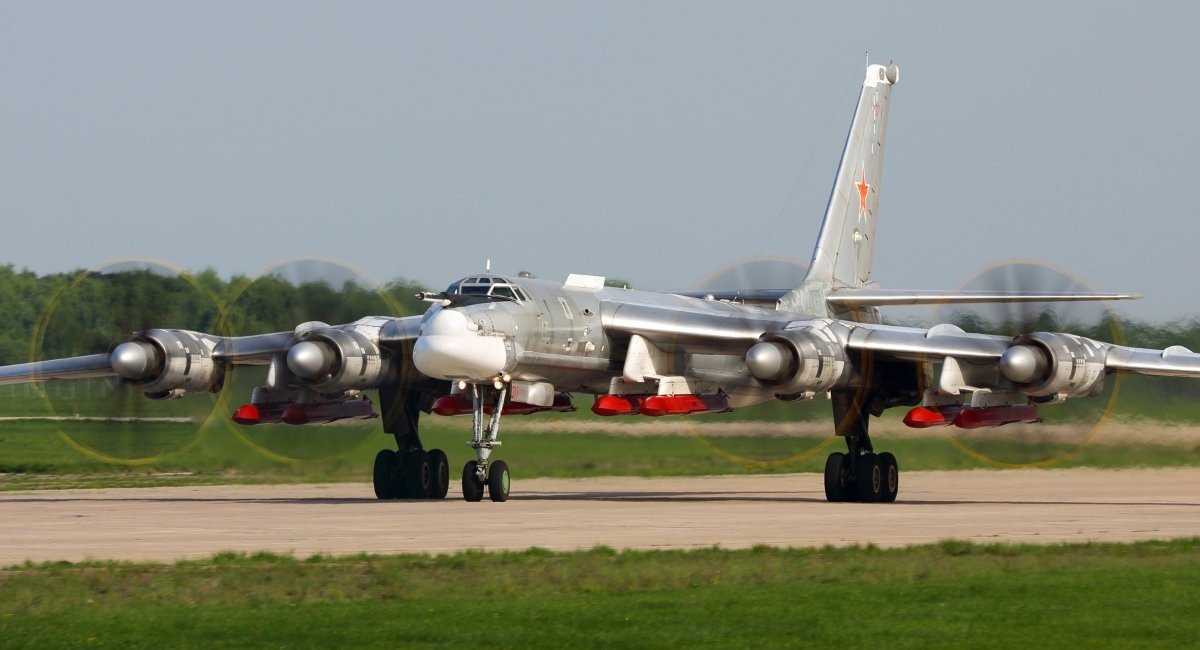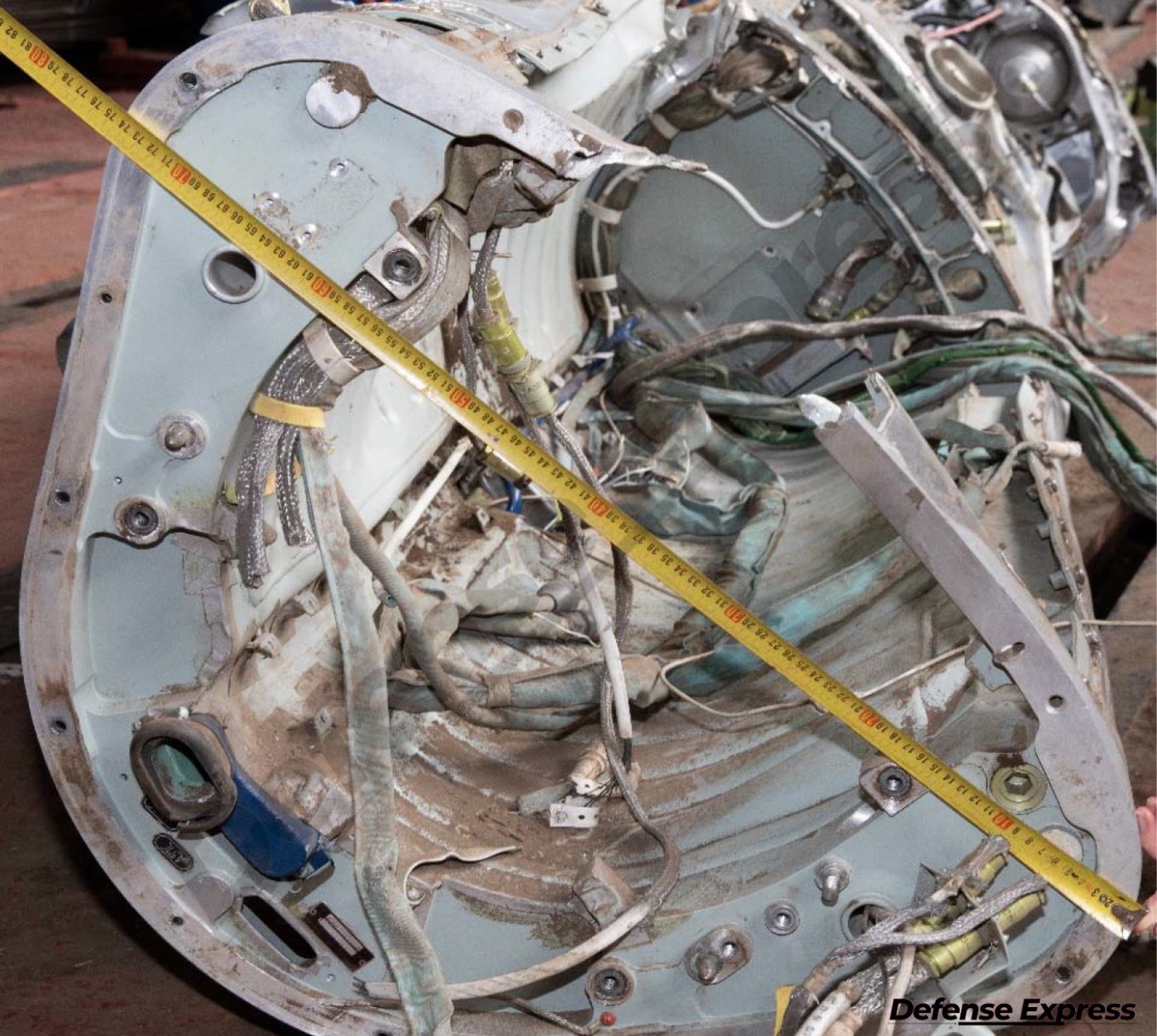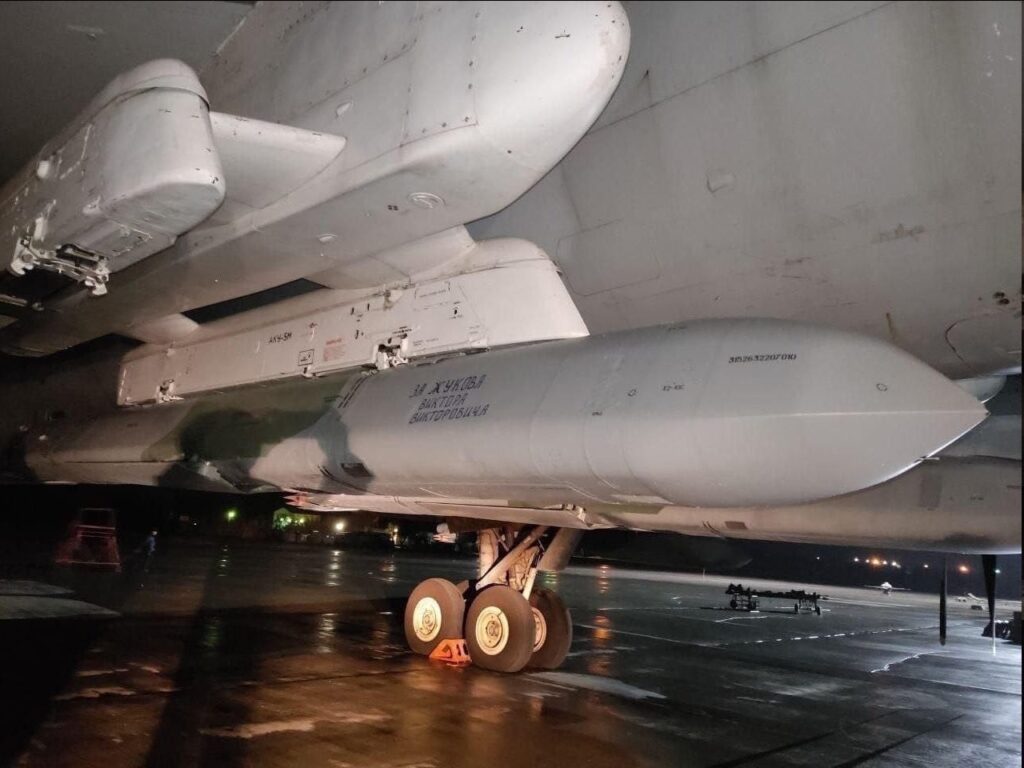The russian 'Stealth' Was Fake: Research Shows no Radar-Absorbent Coating on Kh-101 Missile
~
Tu-95MS bomber with Kh-101 missiles under its wings / Open source illustrative photoOut of three stealth technology components, the Kh-101 cruise missile has only one, the body geometry, but then again, sloppy and barely any effectiveThe russian federation did not manage to replicate the process of making radar-absorbent materials (RAM) to make their aerial vehicles less detectable for enemy surveillance systems. Ukrainian researchers from a specialized design bureau examined the coating of the Kh-101 missiles downed in Ukraine, the report on their findings was obtained by Defense Express.
The results of research show that despite russian claims, Kh-101 is not covered with a special paint that reduces reflection of radiation. This kind of paint is one of the integral components of the stealth technology, along with the peculiar "angular" form of the hull and the use of radio wave transparent materials.

Firstly, the bodies of the examined Kh-101 missiles themselves were made of aluminum alloy with some elements made of stainless steel. The share of composite materials in the body of a cruise missile is insignificant, they are used only in aerodynamic rudders and in coverings for sockets with radio systems, such as the radar altimeter and the satellite guidance receiver.

Secondly, they measured the reflection coefficient of the Kh-101 surface and proved that it in no way affects the visibility of the rocket in the radio spectrum. Thirdly, the missile body is not even intended to do so, because even if it had such properties, the walls are too thick to have an absorbing effect in the frequencies that radars operate in – 2 to 12 GHz.
In other words, all the russian stories about RAM coating on the Kh-101 body turned out to be nothing but propaganda. This, in turn, raises questions about the coating of their new Su-57 fighter.
However, an important feature is that the outlines of the Kh-101 body are actually created with the intent to minimize radar signature facilitated by the missile's low-altitude flight path. By flying low, the missile has a naturally, due to physics, reduced detection range limited by the radio horizon.
 Kh-101 missile / Open source illustrative photo
Kh-101 missile / Open source illustrative photoNonetheless, these findings about the Kh-101 are another example of the russian way of following the "cargo-cult" of stealth technology, which is characterized by ignoring radar-absorbing paint and radio-transparent materials and using just one, the most simple element. Although the Kh-101 missile still does not adhere to the principle thoroughly since it has its engine placed externally.
https://en.defence-ua.com/weapon_and_tech/the_russian_stealth_was_fake_research_shows_no_radar_absorbent_coating_on_kh_101_missile-5966.html